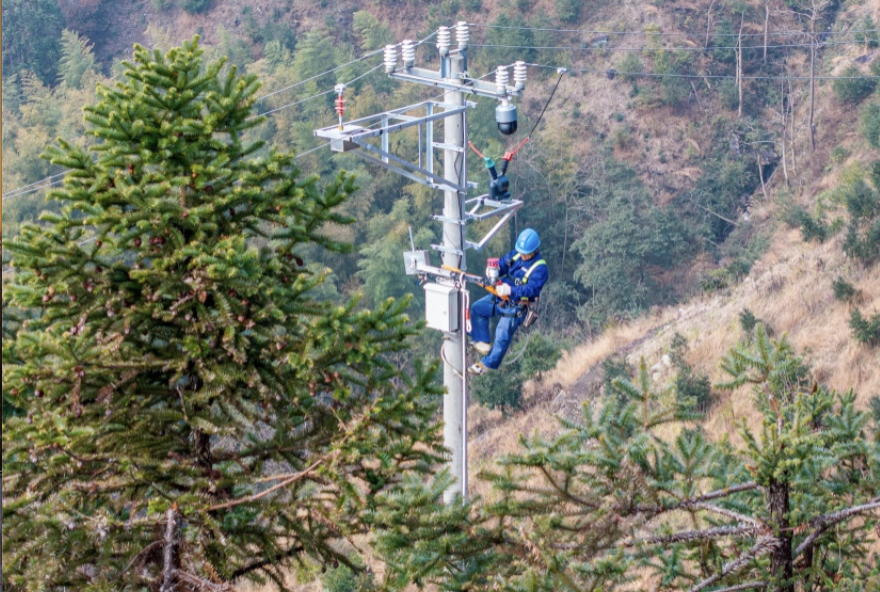"Motor activated, vibration frequency 15 Hz, duration 20 seconds, liquid successfully shed from conductor surface." This status update confirmed the recent successful installation and commissioning of a smart vibration de-icing unit by Ningbo Power Supply Company, State Grid Zhejiang Electric Power on pole 194 of the 10 kV Chengshen E007 line. This marks the first deployment of a 10 kV vibration de-icing system by the company within Zhejiang province, significantly bolstering the reliability of power supply for the upcoming winter and spring seasons.

Ninghai County in Zhejiang is characterized by its rugged terrain, often described as "seven parts mountain, one part water, and two parts field," with extensive mountain ranges dominating its southwest to northwest regions. Power distribution lines serving these areas must traverse this challenging landscape. "Historically, during cold snaps and typhoons, these distribution lines have been highly vulnerable to local weather and geographical conditions," explained Wang Shaoguang, Grid Chief of the Huangtan Grid at State Grid Ninghai County Power Supply Company's Chalu Station. "Ensuring a reliable power supply in ice-prone areas during winter cold waves has been a significant challenge." Winter ice makes mountain roads treacherous, and heavily iced bamboo and trees often collapse, obstructing access and damaging power lines. The difficulty of reaching these remote sites significantly hinders rapid power restoration efforts. With this new de-icing system, relevant staff can remotely monitor icing conditions and activate the vibration unit promptly for both prevention and removal.

Co-developed by State Grid Ningbo Power Supply Company and the Sichuan Energy Internet Research Institute, Tsinghua University (S-EIRI), this vibration de-icing system features modules for observation, vibration, and edge computing, supported by a remote monitoring platform. It offers integrated capabilities for remote ice monitoring, prevention (anti-icing), and removal (de-icing). The system leverages Internet of Things (IoT) technology, Artificial Intelligence (AI) algorithms, and big data analytics to collect real-time field data, including environmental conditions, icing imagery, and meteorological parameters. Furthermore, it can be activated automatically via intelligent detection algorithms or controlled manually from a remote center. By vibrating the power line, the system shakes off raindrops, snow, and light ice accumulations. This proactive measure prevents the formation of heavy ice that could compromise the line's safety and operational stability, thereby enhancing the distribution line's resilience (anti-icing and de-icing) in extreme weather and significantly reducing safety risks for field crews during hazardous conditions.
Compared to traditional de-icing methods, this system offers significant advantages. It enables real-time, remote ice monitoring, prevention, and removal without disrupting normal power supply. Crucially, it eliminates the need for personnel to transport de-icing equipment to remote, mountainous areas and perform manual, on-site operations in harsh winter conditions. This greatly reduces both safety risks and de-icing difficulty. Additionally, the system is designed for long-term operation after a single installation. By emphasizing proactive prevention over reactive maintenance, it effectively minimizes potential damage and associated losses.


